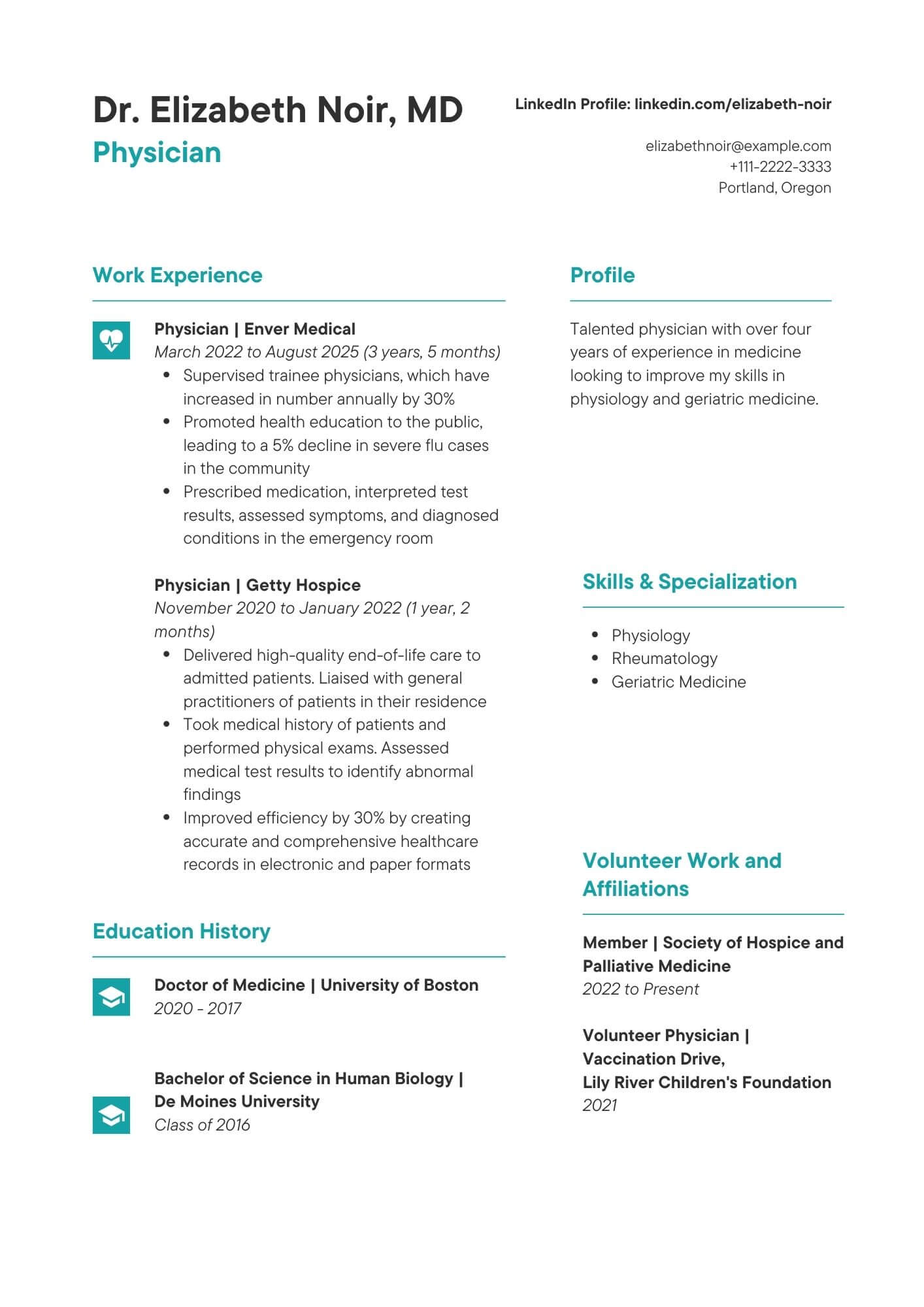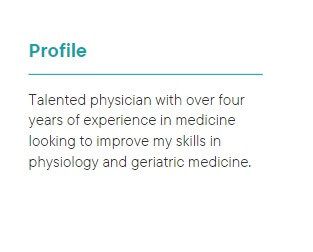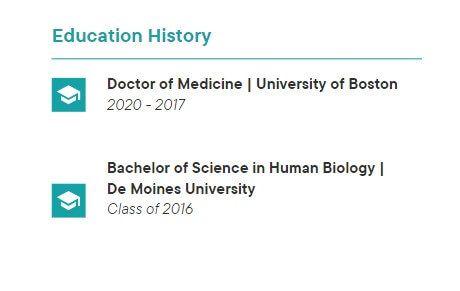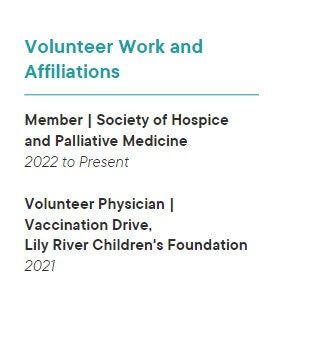You’ve graduated college and med school. Completed your residency and maybe even your fellowship. Now you are facing your next toughest challenge. How do I write a resume to get that dream physician job? Lucky for you, that’s where we come in. In this article, you will find the best ways to format and create your resume to the most professional of standards.
Or try our professional resume builder to make your life easier.
Resume Template
Before you can fill out your resume, you need to know the design elements that you should place on your resume. These are the must-have elements that you need to know.
- Resume format should ideally be in reverse-chronological format. That means you provide your most recent employment and work your way backwards.
- The physician field is a very conservative field. So, stick to the standard black, white and navy blue when choosing your document colors. Hirers don’t like overly graphic or colorful resumes because they can look cluttery.
- Use standard fonts such as Times New Roman, Ariel etc. For your resume. They make your resume look neat, professional and easy to read.
- Don’t add a photo as they are not needed. Instead include a link to a site like LinkedIn and include a professional picture in your bio.
- Use bullet points, like in this article, as it will ensure that you only share the most necessary information and avoid useless data.
- If you have any gaps in your work experience or education, don’t try to hide it in your resume. Use your accompanying cover letter to explain the reason for the gap but don’t try to justify it in your resume itself.

Now let’s see what information you should add to your resume.
Contact Details
Potential hirers need to know how to get in touch with you after they see your CV. There are several details that you can add to this section of your resume.
- Name
- Mailing address
- Email address
- Telephone number
- LinkedIn Profile link (Optional)

Summary
Hirers receive thousands of resumes for each position and don’t have the time to spend reading each resume individually. You only have 07 seconds to grab their attention and a strong resume summary is a good method to do so. These 1-3 sentences should be placed below your name and give a clear picture of the kind of professional that you are.

Try to avoid buzzwords that make your resume less likely to be selected. Use our buzzword finder to make sure that your resume is free of buzzwords.
Work Experience
Your work experience is often the most important part of your resume as it is the section that helps employers decide whether to hire you or not. There are some details that need to be mentioned when you are speaking about your work experience. They are;
- Organization/ Hospital
- City/ State
- Title
- Dates you worked there
- 2 or 3 sentences on your duties and accomplishments

Try using action verbs like diagnosed, treated, oversaw etc. In your sentences about your duties as that will make your resume stronger. Our keyword finder tool can help you there.
It’s also a good idea to give percentages and figures about your duties and accomplishments, without using cliches such as “treated patients.” Be more specific and say, “treated patients at a 1-5 ratio at every shift and oversaw all aspects of their treatment plans.”
If you are less experienced, you can also include volunteer experience in this section.
Education
For a physician resume, there is no need to mention your high school achievements. Collegiate and above is the norm and these will follow the standard format.
- Degree name
- Institution, city and state
- Dates enrolled
Optionally, you can also add your GPA or even things you studied that you feel are relevant to the role you are applying for.

Certifications
You should share any relevant certifications that you have with your future employer. This will help them feel more secure in hiring you as they can be assured that you have the necessary certifications when you begin working.
Skills
There are certain hard and soft skills that all physicians need. Stating that you have these skills, especially those that are included in the job listing, will help your CV pass ATS screening.
Some skills that you can include are
- Physiology
- Interpersonal Communication
- Active Listening
- Pharmaceutical knowledge
- Differential Diagnosis etc.

Don’t list skills that you don’t have as that will be discovered at the interview and cost you the job.
Additional Sections
You can add other sections that you think are relevant. Research that you have done, Awards or Professional Memberships, Hobbies and Languages all can be added in this space. Just make sure that they are appropriate and relevant.

Now that you can craft your own resume, try our career guides blog for more information related to resumes or see our other professional resume samples.

